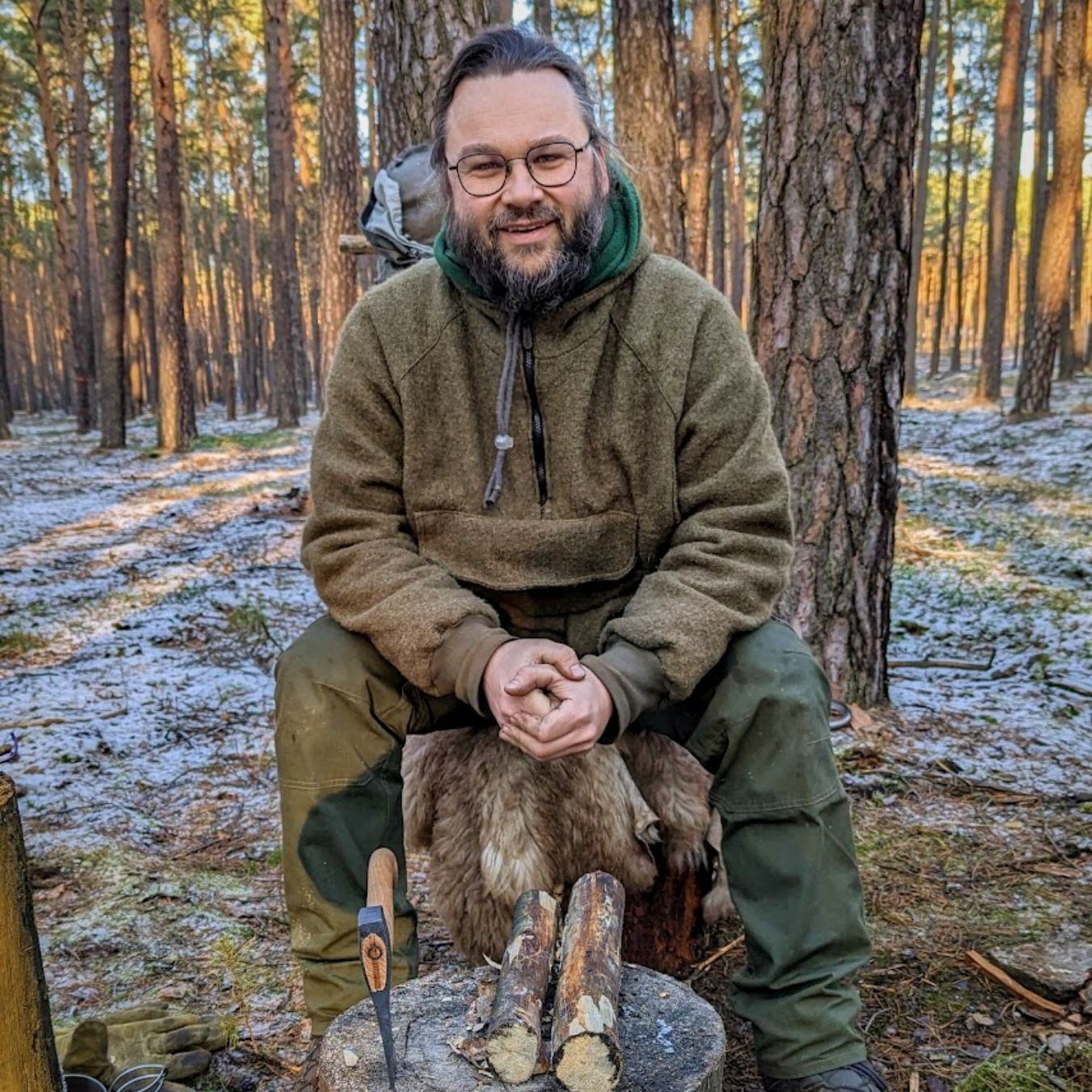
pressure bandage
Noun
Meaning
A pressure bandage is an essential item in the world of survival, wilderness, and outdoor activities. It is a specially designed bandage that applies pressure to a wound, helping to control bleeding and promote healing. In emergency situations, such as when dealing with deep cuts or severe injuries, a pressure bandage can be a lifesaver. It is particularly useful in situations where medical help is not immediately available, making it a crucial tool for those who engage in activities like camping, hiking, and bushcraft. The main purpose of a pressure bandage is to stop bleeding and prevent further complications, making it an indispensable item in any outdoor first aid kit.

Examples
„I was out in the wilderness when I accidentally cut my hand with my knife. It was a deep wound and I knew I needed to apply a pressure bandage to stop the bleeding.“
„Luckily, I had my survival kit with me, which included a pressure bandage. I quickly unwrapped it and tightly wrapped it around my hand, applying pressure to the wound.“
„The pressure bandage worked like a charm, and the bleeding gradually stopped. I was relieved to have such an essential item in my kit.“
„I remember a fellow survival enthusiast telling me about the importance of carrying a pressure bandage in the wild. He said it could be a lifesaver in case of severe bleeding.“
„During a bushcraft training session, our instructor demonstrated how to properly apply a pressure bandage. He emphasized the need to wrap it tightly and maintain constant pressure to control the bleeding.“
„“
Origin
The term "pressure bandage" originated from the medical field and has its roots in the practice of applying pressure to control bleeding. It has evolved over time to become an essential tool in first aid and emergency situations.
Synonyms
Compression bandage, Elastic bandage, Pressure dressing, Pressure wrap, Pressure pad, Pressure wrap, Pressure garment, Pressure wrap
Antonyms
Loose bandage, Non-compressive bandage, Non-tight bandage, Non-pressurized bandage, Non-squeezing bandage, Non-constricting bandage, Non-tightening bandage, Non-compressing bandage
Relatives
First aid, Wound care, Emergency medical treatment, Bleeding control, Trauma management, Medical supplies, First responder, Emergency preparedness
Historical and cultural importance
A pressure bandage is an essential tool in the world of survival and first aid. Its historical and cultural relevance can be traced back to ancient times when various civilizations developed methods to control bleeding and promote wound healing.
In ancient Egypt, for example, medical papyri dating back to 1550 BCE describe the use of bandages made from linen to apply pressure and support injured limbs. These early pressure bandages were often combined with medicinal herbs and substances to enhance their healing properties.
Throughout history, different cultures and civilizations have developed their own variations of pressure bandages. In ancient Greece, for instance, physicians like Hippocrates and Galen advocated for the use of tight bandages to control bleeding and reduce swelling. The Romans also utilized bandages made from linen or wool to treat wounds sustained in battle.
During the Middle Ages, the art of bandaging wounds became more refined, with the development of techniques such as the spiral bandage and the figure-eight bandage. These methods were widely used by knights and battlefield medics to provide immediate care to wounded soldiers.
Today, pressure bandages continue to play a crucial role in first aid and survival situations. They are designed to apply direct pressure to a wound, helping to control bleeding and prevent further injury. By understanding the historical and cultural significance of pressure bandages, we can appreciate the evolution of this life-saving tool and its continued relevance in modern-day survival practices.
More information about the term pressure bandage
What is a Pressure Bandage?
A pressure bandage is an essential tool in any survival or first aid kit. It is a type of bandage that is specifically designed to apply pressure to a wound or injury, helping to control bleeding and promote healing. Pressure bandages are commonly used in emergency situations, such as when someone is injured in the wilderness or during a survival scenario.
How Does a Pressure Bandage Work?
A pressure bandage works by applying direct pressure to a wound, which helps to constrict blood vessels and reduce bleeding. It typically consists of a sterile pad or dressing that is placed directly over the wound, followed by a stretchy bandage that is wrapped tightly around the affected area. The bandage is then secured in place with clips or adhesive tape.
The pressure applied by the bandage helps to control bleeding by compressing the blood vessels and reducing blood flow to the injured area. This not only helps to prevent further blood loss but also promotes the formation of blood clots, which are essential for the healing process.
When to Use a Pressure Bandage
A pressure bandage should be used in situations where there is significant bleeding from a wound or injury. It is particularly effective for controlling bleeding from deep cuts, puncture wounds, or arterial bleeding. Arterial bleeding is characterized by bright red blood that spurts out in time with the heartbeat and can be life-threatening if not addressed promptly.
It is important to note that a pressure bandage should not be used for minor cuts or scrapes, as these can typically be treated with simple first aid measures such as cleaning the wound and applying an adhesive bandage. However, in more severe cases where bleeding cannot be easily controlled, a pressure bandage should be applied while seeking medical help.
How to Apply a Pressure Bandage
When applying a pressure bandage, it is important to follow these steps:
- Clean the wound thoroughly with clean water or antiseptic solution.
- Apply a sterile pad or dressing directly over the wound.
- Wrap the stretchy bandage tightly around the affected area, ensuring that it covers the entire wound.
- Continue wrapping the bandage until it is secure, but be careful not to wrap it too tightly, as this can restrict blood flow.
- Secure the bandage in place with clips or adhesive tape.
Remember to regularly check the pressure bandage to ensure that it remains secure and that bleeding is under control. If bleeding persists or worsens, seek immediate medical attention.
Conclusion
A pressure bandage is a vital tool for controlling bleeding and promoting healing in emergency situations. By applying direct pressure to a wound, it helps to constrict blood vessels and reduce blood flow, preventing further blood loss and promoting the formation of blood clots. Knowing how to properly apply a pressure bandage can be a life-saving skill in survival scenarios or when medical help is not immediately available.
Back to overview

